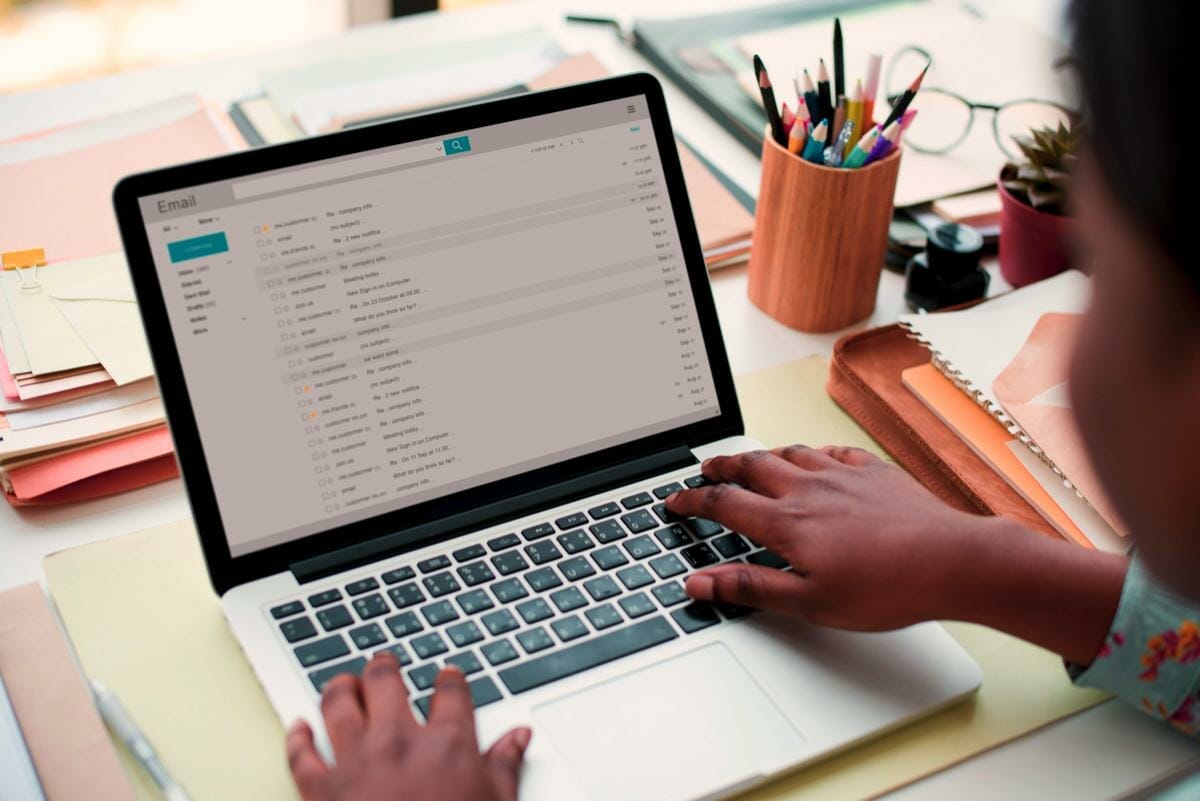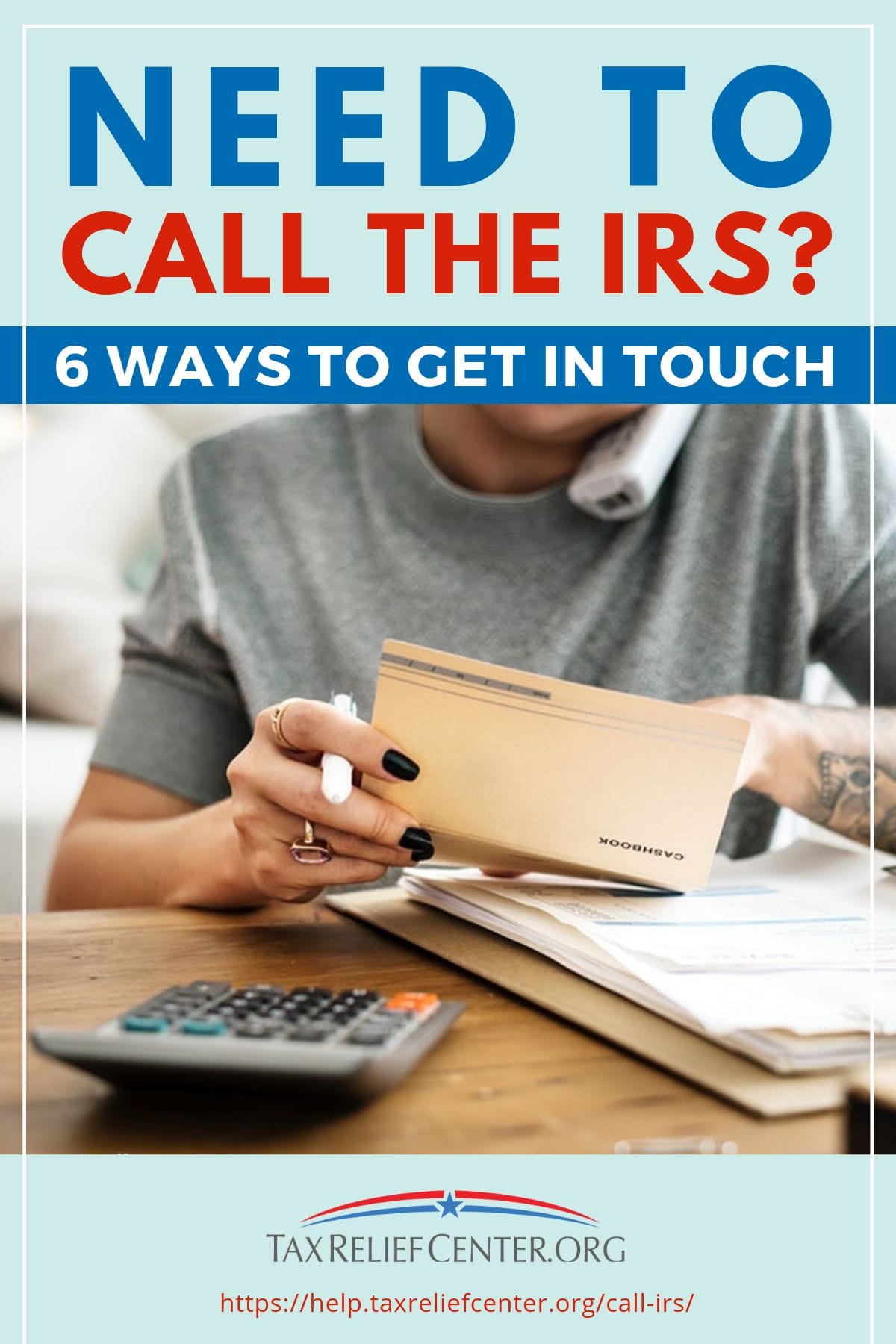A lot of taxpayers want to call the IRS about their tax concerns and knowing the most efficient ways to contact the IRS can help a lot of people deal with their taxes.
In this article:
- Go to the IRS Main Office
- Find the Nearest Local IRS Office
- Call the Main IRS Hotline or the Specialized IRS Numbers
- Get an IRS Live Person
- Chat or Email the IRS Online
- Send or Reply to the IRS Mail Correspondence
The 6 Efficient Ways to Call the IRS
1. Go to the IRS Main Office
The IRS main office is in the Internal Revenue Service Building, 1111 Constitution Ave., NW; Washington, D.C. 20224.
Of course, not all taxpayers are near the main office, so going to local branches may serve them better.
Why should you visit the main office?
First off, the Office of the Taxpayer Advocate is there. This office helps taxpayers in resolving their concerns about the IRS system.
You will also find there the Office of Professional Responsibility (OPR). This office takes care of any issues about tax practitioners for conviction of a crime or failure to file their own tax returns.
Most importantly, the Office of Appeals is in the building. This office takes care of taxpayers who currently are in talks with the IRS for their tax controversies without the need of going to a court.
2. Find the Nearest Local IRS Office
There is an easy way to find the nearest local IRS office. The IRS office locator can give you a straightforward answer.
By inputting your zip code in the space provided, the website will find the IRS offices nearest you. You can search for an office anywhere from a 5 to a 1,500-mile radius.
Of course, the local IRS office may not have all the solutions that you may need.
Some local IRS offices serve as payment centers only but may have their own rules and regulations that taxpayers are unaware of.
Since there are quite a number of local IRS offices, you can search their contact numbers beforehand and give them a call.
3. Call the Main IRS Hotline or the Specialized IRS Numbers
There are quite a lot of specialized IRS numbers. Each specialized number routes you to a professional who can help and can save you time, rather than go to the direct line only to have to wait so that an operator can route you to the correct department.
One of the most often called issues is about Employer Identification Numbers. The number to call to get hold of these numbers is 800-829-4933.
If you are looking for confirmation if the entity is tax-exempt or for any tax-related questions about government entities, then you can call 877-829-5500
866-699-4096 is for issues regarding excise taxes and Form 2290.
For Order Tax Forms and Publications, the number is 800-829-3676.
If you are looking for more information about tax returns, the number is 866-455-7438.
800-829-4059 is the number to call on behalf of the deaf and those who need help due to some disabilities.
The direct line for individual taxpayers is 800-829-1040. For corporations and businesses, the number is 800-829-4933.
For a more in-depth resource page about the IRS contact information, head on to their Telephone Assistance Page.
RELATED: IRS Levy: The Difference Between Tax Liens And Tax Levies
4. Get an IRS Live Person
Like most toll-free numbers, callers may find it difficult to find an IRS live person to talk to.
Rather than go through the prompts, there is a way for a taxpayer to get through to a live representative.
However, do note that there is still a considerable wait time before you get a live person.
- First off, do not choose the option “Refund” or else you will go directly to an automated line. Instead, choose option 2 which is “Personal Tax Income.”
- Next, choose option number 1, which is “Form, Tax History, or Payment.” Then choose 3 for “All Other Questions.”
- After the prompt, select “All Other Questions” again or press 2.
- The line will ask you to enter the EIN or SSN twice. You do not need to input the information for if you do not input any number, the prompt will ask another question.
- After that, press option 2 again. This prompt is “Tax Questions for Individuals,” not for businesses.
You are now in the queue for an IRS live representative.
5. Chat or Email the IRS Online
If you are not in a hurry, you can just send a message to the IRS.
The website accepts both chat and email messages. The IRS usually sends a reply within 48 business hours.
Send a message to their IRS Navigate page. Just make sure you only send one email, since duplicated emails will result in delays.
You can also try the IRS email address at [email protected] if you want to have an electronic record in your email.
6. Send or Reply to the IRS Mail Correspondence
Lastly, you can simply reply to all the notices by the IRS.
Knowing which notices require which reply can definitely help, so take a look at this useful IRS Collection Notices.
Remember though that correspondence via snail mail can take quite some time. Generally, it takes around 30 to 45 days for the IRS to receive your mail and another 30 to 45 days for you to receive their reply.
Keep in mind, though, that due to the long stretches of time involved in the mailing process, delays are inevitable.
This can also work to your benefit so knowing about the statute of limitations can become a boon for you if the IRS did not act upon actionable issues for a long time.
The Statute of Limitations Definition: It protects taxpayers from the IRS chasing their unpaid taxes if a specific period of time has already passed. The IRS has 10 years from the date of tax assessment to collect taxes, or else the taxes are automatically forfeited and the taxpayer no longer needs to pay said taxes.
3 Important Things to Remember
Every taxpayer should observe proper phone etiquette when dealing with the IRS.
Always start by stating your name, the reason for the call, and an inquiry if you called the right number.
Knowing how to contact the IRS is just half the battle. Taxpayers should also know how to negotiate with them.
1. Only Call During IRS Hours
The IRS hours are from 7 a.m. to 7 p.m. in all US timezones from Monday to Friday. This timeframe means you can call as early as 7 a.m. Eastern Standard time and as late as 7 p.m. Pacific Standard Time.
If you are too busy, you may still call outside of their office hours as well. However, expect to get an automated system or a voicemail, which may not provide you with all the information that you need.
2. Prepare All Documents Beforehand
Perhaps the most important piece of information to prepare is your Social Security card. This information is important for any IRS transaction.
If your SSN is not available, prepare your Individual Taxpayer Identification Number (ITIN).
Also, prepare your previous tax return. The IRS may want to confirm what you see in your hands.
Lastly, have with you all the letters or notices you received.
It is a good idea to write down all your questions before calling the IRS. Of course, prepare a pen and paper just in case you need to write something down.
3. The Internal Revenue Service Wants to Help You
The IRS is here to help you, not to bankrupt you. As long as you perform your tax responsibilities properly, you have nothing to worry about.
Treat the IRS live rep as a person, and they will treat you the same. Help them help you.
However, do not give out information if not asked. If you do not understand, ask them to simplify it or record their statement and ask a tax professional.
Getting a timely and accurate response is important for taxpayers. The IRS, however, is a very busy agency with so many responsibilities and numerous taxpayers reaching out to them on a daily basis.
Perhaps the best time-saving idea for taxpayers is to know how to prepare for the tax date. It can help minimize the need for contacting the IRS.
Make your communication with the IRS as simple and as efficient as possible. The IRS is here to get the right taxes, not to punish you.
Do you have other contact information for the IRS not listed here? What strategies do you use when you talk to someone from the IRS? Let us discuss in the comments section below.
Up Next: Things NOT To Say To The IRS If You Owe Back Taxes





